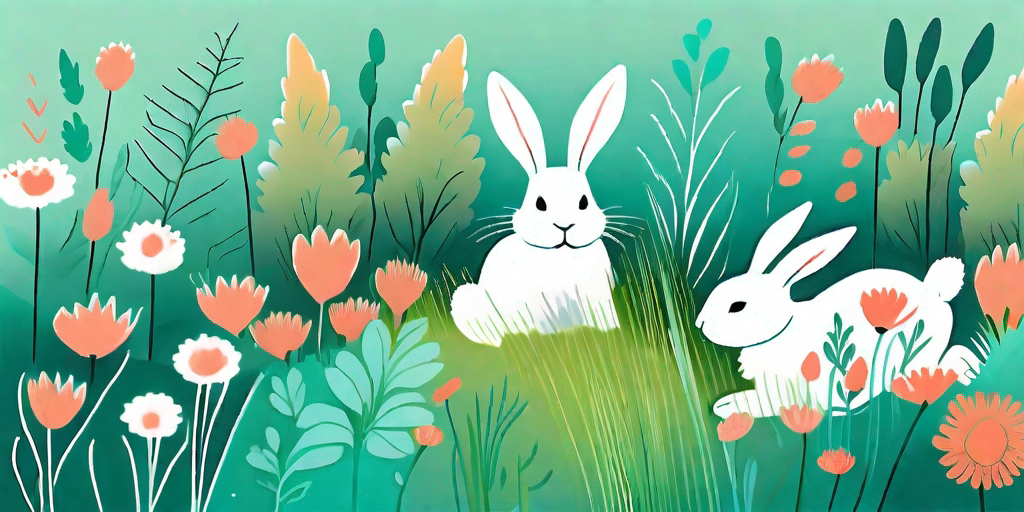
If you're looking for a way to add a touch of whimsy and a whole lot of fluff to your garden, then bunny tail grass is the way to go. This charming plant, with its fluffy, cotton ball-like blooms, is as adorable as its namesake and is sure to bring a smile to your face every time you step into your garden.
What is Bunny Tail Grass?
Before we hop into the nitty-gritty of how to grow and care for bunny tail grass, let's take a moment to get to know this delightful plant a little better. Bunny tail grass, also known as Lagurus ovatus, is a perennial plant native to the Mediterranean region. It's known for its distinctive, fluffy white blooms that resemble, you guessed it, a bunny's tail.
But don't let its cute appearance fool you. Bunny tail grass is a hardy plant that can thrive in a variety of conditions. It's drought-tolerant, can handle full sun to partial shade, and isn't picky about soil types. This makes it a great choice for gardeners of all skill levels.
How to Grow Bunny Tail Grass
Now that we're acquainted with our fluffy friend, let's get down to the business of growing it. Despite its exotic origins, bunny tail grass is surprisingly easy to grow. Here's how you can get your garden hopping with this fluffy addition.
Choosing the Right Spot
First things first, you need to pick the right spot for your bunny tail grass. This plant loves the sun, so choose a spot in your garden that gets plenty of it. While bunny tail grass can tolerate some shade, too much of it can cause the plant to become leggy and lose its distinctive shape.
As for the soil, bunny tail grass isn't too fussy. It can grow in a variety of soil types, from sandy to clay. However, it does prefer well-draining soil. So, if your garden has heavy clay soil, you might want to amend it with some compost or sand to improve drainage.
Planting the Seeds
Once you've chosen the perfect spot, it's time to plant the seeds. Bunny tail grass seeds can be sown directly into the soil in late spring or early summer. Simply scatter the seeds over the soil and cover them lightly with a thin layer of soil or compost.
Keep the soil moist until the seeds germinate, which usually takes about two weeks. Once the seedlings are about an inch tall, thin them out so that they're spaced about a foot apart. This gives each plant plenty of room to grow and ensures that they get enough sunlight.
Caring for Bunny Tail Grass
Now that your bunny tail grass is planted and growing, you need to take care of it. But don't worry, this isn't a high-maintenance plant. Here's what you need to do to keep your bunny tail grass happy and healthy.
Watering
Bunny tail grass is drought-tolerant, which means it doesn't need a lot of water. In fact, overwatering can cause the roots to rot. So, it's best to let the soil dry out between waterings. A good rule of thumb is to water your bunny tail grass once a week during dry periods and less frequently when it rains.
When you do water your bunny tail grass, make sure to water deeply. This encourages the roots to grow deep into the soil, which makes the plant more drought-tolerant.
Pruning
Pruning isn't necessary for bunny tail grass, but it can help to maintain its shape and encourage new growth. In late winter or early spring, cut back the old foliage to make room for new growth. Just be sure not to cut back too much, as this can stress the plant.
If your bunny tail grass starts to look a little ragged during the growing season, feel free to give it a light trim. This can help to rejuvenate the plant and keep it looking its best.
FAQs
Is bunny tail grass invasive?
While bunny tail grass can self-seed and spread in the garden, it's not considered invasive. However, it's always a good idea to keep an eye on your plants and remove any unwanted seedlings before they get too big.
Can bunny tail grass be grown in pots?
Absolutely! Bunny tail grass makes a great container plant. Just make sure to use a pot with good drainage and don't overwater.
Is bunny tail grass safe for pets?
Yes, bunny tail grass is non-toxic to pets. However, like any plant, it can cause digestive upset if ingested in large amounts. So, it's best to keep an eye on your furry friends when they're in the garden.
Conclusion
So, there you have it. Everything you need to know to get your garden hopping with bunny tail grass. This fluffy addition is sure to add a touch of charm and whimsy to your landscape. So, why not give it a try? Your garden (and your inner child) will thank you.















